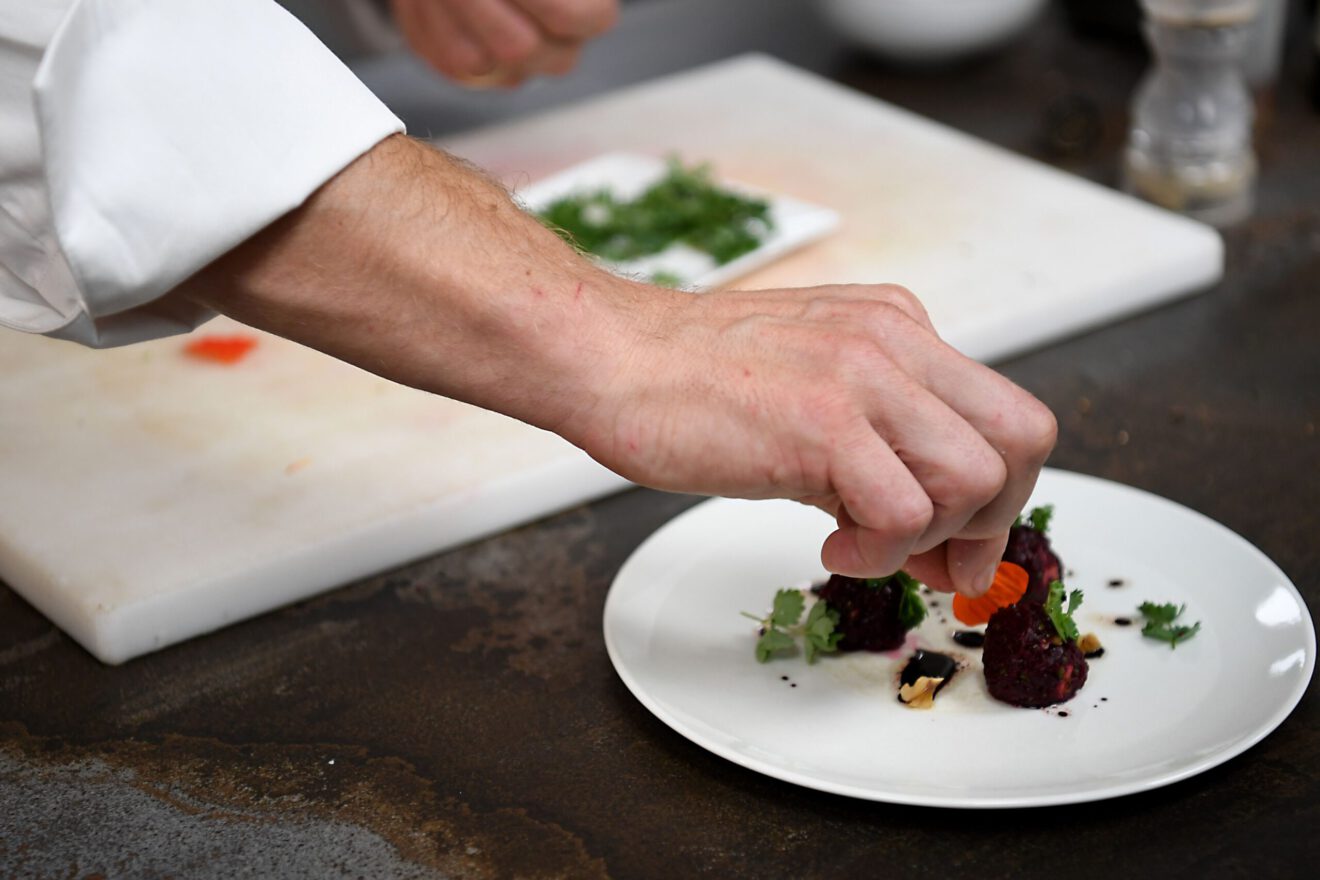As restaurants become increasingly focused on cutting waste, many are taking innovative steps to meet their goals. Whether it’s completely feasible for restaurants and foodservice establishments to achieve zero-waste, however, remains questionable without changing key operational strategies.
UK eatery Silo was recently celebrated for its commitment to zero waste, but even its proprietor Douglas McMaster admits that some trash is inevitable at the end of each night, such as empty wine bottles. However, that doesn’t stop him and other restaurateurs from trying to come as close to achieving zero wasted food as possible.
Planning is imperative
“There are many levels of waste happening in every restaurant today,” says Tom Penn of consulting firm Real Restaurant Solutions. Impeccable planning can help eliminate many of the problems that stem from food waste, he suggests:
- Waste from preparing finished goods: For example, the compostable exterior of fruits and vegetables, as well as portions that are not used but come as part of the ingredient. “These waste areas can be controlled and reduced through cross-utilization menu planning, training, purchasing techniques and composting,” Penn advises. “This waste component will probably never get to zero, but if the back end was developed to repurpose and reuse all scraps, it could be a closed cycle.”
- Waste from over prepping, leading the product to spoil before serving: Menu planning, prep planning techniques, training, purchasing techniques and composting can help drive down this waste component, he says. A restaurant could create a closed cycle in this category as well, “but unless there is a pickup for spoiled food, this waste will remain,” he says.
- Waste from guests not finishing: Waste in this area can be reduced by careful observation of what is not being consumed and adjusting portion sizes accordingly, Penn advises, which could eventually make it a closed cycle.
- Waste due to refrigeration malfunction: “This is infrequent, but it does predictably occur on a few occasions per year, where a freezer or walk-in refrigerator goes down on a hot day and all of the food must be discarded — heartbreaking but true — unless there is a pickup for spoiled food, this waste will remain,” he adds.
Track waste the same way other costs are tracked
Before a restaurateur can begin to slash waste, he or she must first identify how much it has, advises John Turenne, president of Sustainable Food Systems, LLC in Wallingford, Conn.
“You manage your business by carefully monitoring labor and food costs, why should you not track your waste? This way, as you implement the technical aspects of waste management, you can see if there’s an impact to reduce the poundage and cost of food wasted,” he says.
Once an eatery is aware of its wastage, it can appropriately find ways to cut down on it. “Techniques should start with better forecasting,” he says. “Also, make sure the staff is trained on proper culinary techniques. For example, when they’re trimming fruits and vegetables, they should take the time to trim effectively. It may sound like common sense, but when you’re mass producing and under a tight time frame, staff members may simply chop the bottom 25% off a head of celery and throw it in the compost instead of pulling the stalks of celery off and trimming the bottoms. For every head of celery, you could improve from a 75% yield to a 90% yield.”
In addition, kitchen staff should keep close eyes on dishes throughout the cooking process. “If food is prepared poorly, tastes bad or is burnt, they will toss the whole thing away. You’d be surprised how often the food has to be done over and it’s thrown away just because it isn’t perfect,” Turenne says.
In buffet restaurants or foodservice venues such as college kitchens, batch cooking processes must be tracked very prudently. “Carefully track customer flow and transactions,” Turenne advises. “That way, you can prepare smaller amounts over time as needed, so when it gets to the end of a meal period or to the point when they stop serving, you only have a small amount left.”
Discuss environmental impact with staff
Because kitchen staff members aren’t always as attuned to the financial costs of wasting food, it’s a good idea to train them about the environmental impacts, Turenne says. “They should know the impact both upstream and downstream as food is wasted. The food had to be grown, transported — and then thrown away. Think about how much gas, water and pesticides are wasted due to that.” In addition, on the downstream side of things, visually show the staff exactly how much food the kitchen has thrown away and put in landfills, composts and dumpsters to allow them to visualize the impact of waste on the environment.
Turenne points to the EPA’s Food Recovery Hierarchy pyramid as a quick visual that allows staff members to understand how best to manage food waste. “Many people think that a sustainable food program just involves composting, but if we look at the pyramid, that’s the next-to-last recommendation — the highest priority should be minimizing overproduction of food. Forecasting and planned production in the first place should happen so there aren’t leftovers, and if there are, they should be donated,” he said.
__________________________________________________
If you enjoyed this article, join SmartBrief’s email list for more stories about the food and beverage industry. We offer 20 newsletters covering the industry from restaurants to food manufacturing. And be sure to follow us on Twitter for the latest industry news.
